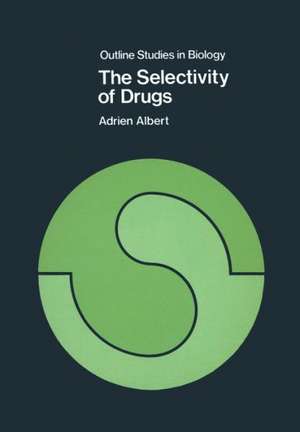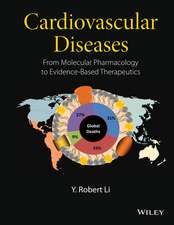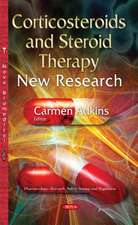The Selectivity of Drugs: Outline Studies in Biology
Autor Adrien Alberten Limba Engleză Paperback – 29 mai 1975
Din seria Outline Studies in Biology
-
 Preț: 375.07 lei
Preț: 375.07 lei -
 Preț: 375.07 lei
Preț: 375.07 lei -
 Preț: 375.62 lei
Preț: 375.62 lei -
 Preț: 375.07 lei
Preț: 375.07 lei -
 Preț: 375.62 lei
Preț: 375.62 lei -
 Preț: 375.07 lei
Preț: 375.07 lei -
 Preț: 375.84 lei
Preț: 375.84 lei -
 Preț: 375.84 lei
Preț: 375.84 lei -
 Preț: 375.07 lei
Preț: 375.07 lei -
 Preț: 375.45 lei
Preț: 375.45 lei -
 Preț: 375.07 lei
Preț: 375.07 lei -
 Preț: 375.62 lei
Preț: 375.62 lei - 15%
 Preț: 637.28 lei
Preț: 637.28 lei -
 Preț: 375.84 lei
Preț: 375.84 lei -
 Preț: 375.62 lei
Preț: 375.62 lei - 5%
 Preț: 357.23 lei
Preț: 357.23 lei -
 Preț: 375.45 lei
Preț: 375.45 lei -
 Preț: 375.07 lei
Preț: 375.07 lei
Preț: 375.62 lei
Nou
Puncte Express: 563
Preț estimativ în valută:
71.87€ • 75.24$ • 59.47£
71.87€ • 75.24$ • 59.47£
Carte tipărită la comandă
Livrare economică 08-22 aprilie
Preluare comenzi: 021 569.72.76
Specificații
ISBN-13: 9780412130908
ISBN-10: 0412130904
Pagini: 64
Ilustrații: 64 p.
Dimensiuni: 170 x 244 x 4 mm
Greutate: 0.12 kg
Editura: SPRINGER NETHERLANDS
Colecția Springer
Seria Outline Studies in Biology
Locul publicării:Dordrecht, Netherlands
ISBN-10: 0412130904
Pagini: 64
Ilustrații: 64 p.
Dimensiuni: 170 x 244 x 4 mm
Greutate: 0.12 kg
Editura: SPRINGER NETHERLANDS
Colecția Springer
Seria Outline Studies in Biology
Locul publicării:Dordrecht, Netherlands
Public țintă
ResearchCuprins
1 Introduction.- 1.1 What is Selectivity?.- 1.2 The aims and accomplishments of Selectivity.- References.- 2 Three principles that control selectivity.- 3 Steps in the correlation of structure with biological activity.- 3.1 Introduction.- 3.2 The first correlations.- 3.3 The concept of ‘receptors’.- 3.4 The receptor as an enzyme or permease.- 3.5 The receptor as a nucleic acid.- 3.6 The receptor as a coenzyme, or other small molecule.- 3.7 Other aspects of receptors.- 3.8 Targets that are not necessarily receptors.- 3.9 Regression analysis.- 3.10 Conclusion.- References.- 4 Favourable differences in distribution: the first principle of selectivity.- 4.1 Some examples.- 4.2 Qualitative aspects of distribution.- 4.3 Quantitative aspects of distribution.- 4.4 The permeability of natural membranes.- 4.5 Metabolic change leading to activation.- 4.6 Metabolic change leading to inactivation.- 4.7 Synergism and antagonism.- 4.8 Conclusion.- References.- 5 Favourable differences in biochemistry: the second principle of selectivity.- 5.1 Introduction.- 5.2 Analogous enzymes.- 5.3 More analogous enzymes: the dihydrofolate reductases.- 5.4 Absence of enzymes from one of the species I. The sulphonamides and organophosphates.- 5.5 Absence of enzymes. II Further examples.- 5.6 Metabolite analogues (mostly antagonists).- 5.7 Other utilizable biochemical differences.- 5.8 Conclusion.- References.- 6 Favourable differences in cell structure: the third principle of selectivity.- References.- 7 Acquired resistance to drugs: the loss of selectivity.













